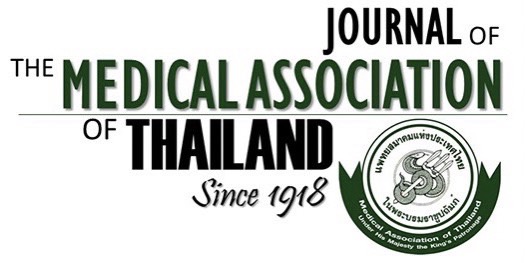Perioperative and Anesthesia Adverse Events in Thailand [PAAd Thai] Incident Reporting Study: Unplanned ICU Admission Analysis
Thanist Pravitharangul MD1, Cherdkiat Karnjanarachata MD1, Manasnun Kongwibulwut MD2, Orawan Pongraweewan MD3, Nopadon Chernsirikasem MD4, Dujduen Sriramats MD5, Sukanya Pongruekdee MD6, Settapong Boonsri MD7
Affiliation : 1 Department of Anesthesiology, Ramathibodi Hospital, Mahidol University, Bangkok, Thailand
2 Department of Anesthesiology, Faculty of Medicine, Chulalongkorn University, King Chulalongkorn Memorial Hospital,
Thai Red Cross Society, Bangkok, Thailand
3 Department of Anesthesiology, Siriraj Hospital Mahidol University, Bangkok, Thailand
4 Department of Anesthesiology, Phramongkutklao Hospital, Phramongkutklao College of Medicine, Bangkok, Thailand
5 Department of Anesthesiology, Faculty of Medicine, Srinakharinwirot University, Bangkok, Thailand
6 Department of Anesthesiology, Charoenkrung Pracharak Hospital, Bangkok, Thailand
7 Department of Anesthesiology, Faculty of Medicine, Chiang Mai University, Chiang Mai, Thailand
Objective : To study of anesthetic outcomes and patient characteristics, events, and factors to determine the risks related to unplanned
intensive care unit [ICU] admission after anesthesia.
Materials and Methods : The present study was a part of the Perioperative and Anesthetic Adverse events in Thailand [PAAd
Thai] study. This is a prospective observational study analysis of structured case record form. Data collection was conducted in 22
hospitals across Thailand between January and December 2015. Baseline characteristics, details of anesthesia, type of procedure,
and adverse events were recorded and analyzed to determine risks related to unplanned ICU admission after anesthesia.
Results : Rate of unplanned ICU admission was 4.3:10,000 anesthetic procedures. Cardiac arrest within 24 hours post-anesthesia
had highest relative risk of 9.36. The other signi(cid:976)icant factors were elder age, duration longer than 120 minutes, higher ASA physical
status (III, IV, V), overtime, emergency procedure, cardiac surgery, general surgery, vascular surgery, desaturation within 24
hours post-anesthesia, reintubation within 24 hours post-anesthesia, neurological complication within 24 hours post-anesthesia,
myocardial ischemia within 24 hours post-anesthesia, and cardiac arrest within 24 hours post-anesthesia. After risk adjustment,
the signi(cid:976)icant predictive factors were higher ASA physical status (III, IV, V), long anesthetic duration (longer than 120 minutes),
vascular surgery, reintubation within 24 hours post-anesthesia, and cardiac arrest within 24 hours post-anesthesia. Reintubation
within 24 hours post-anesthesia had the highest odds ratio of 8.36.
Conclusion : The predictive factors for unplanned ICU admission after anesthesia in Thailand were higher ASA physical status (III,
IV, V), long anesthetic duration (longer than 120 minutes), vascular surgery, reintubation within 24 hours post-anesthesia, and
cardiac arrest within 24 hours post-anesthesia.
Keywords : Anesthesia, Complication, ICU admission, Intensive care unit, Unplanned admission



